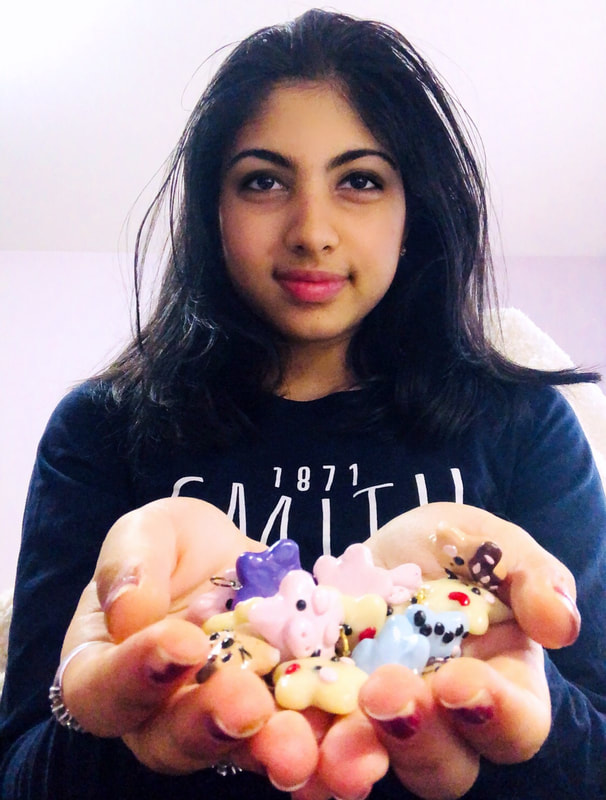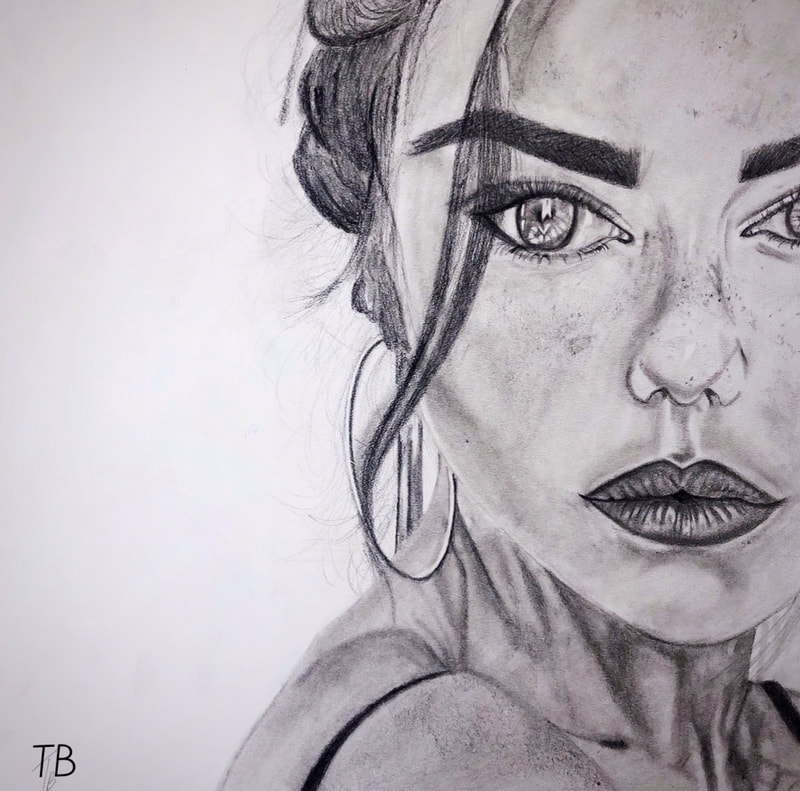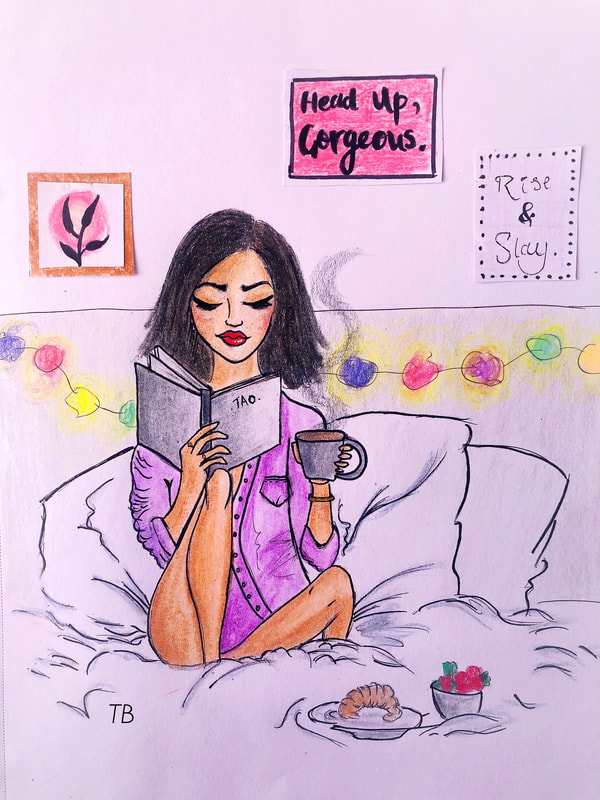|
By Anya Shukla If I had to describe Trisha Beher in one word, I would pick the slightly cheesy “artivist.” When I first talked to Trisha Beher, I thought she was just a visual artist. As we spoke further, however, it became clear that she has explored a variety of disciplines, from digital art to music. But the one throughline that connects her diverse practices? Beher wants her artwork to make an impact. In elementary school, Beher began working with visual art and has since experimented with a variety of mediums: oil pastel, charcoal, pencil, colored pencil, and more. Recently, she’s also begun to experiment more with digital art, which she posts on her Instagram. As well, Beher currently uses her artistic abilities to fundraise for COVID-19 aid: she creates and sells little polymer clay charms; all proceeds are donated to Food Lifeline, a local nonprofit. Her work has raised over $300. “It isn’t that much, but I know that it’ll definitely make an impact,” she said. Additionally, inspired by her fundraiser, this month, she started an organization called Art Shine Foundation, which seeks to further leadership, creativity, and service amongst teenagers. Beher's parents wholeheartedly support her artmaking, and their positivity has made her more inclined to pursue a professional career in the arts: specifically, as a harpist. After cajoling her parents to buy her the instrument in third grade, she’s since participated in many ensembles and performances. However, she often noticed a lack of diversity in the harp world. “Whenever I saw master harpists, all of them were white. Whenever I would go to ensembles, any harpist there would be white as well,” she said. “It starts getting to your head. It starts getting discouraging when you don’t see people of color performing with you or pursuing the things that you want.” Nevertheless, with her parents’ encouragement, she’s stayed with the instrument. Even though she faced barriers, she said, her experience shows that “it doesn’t matter how much distance there is between you and your goal—you’ll find a way to do it.” Unfortunately, Beher sees a lack of representation persist even outside of music. At her high school, specifically, she sees very few Asian artists. “Everywhere I looked, I never really saw people who looked like me doing art,” she noted. Because of this, socially, Beher has felt pressure to move away from the arts: “I would start questioning myself: should I start expressing interest in different things? Is this not worth my time?” she said. “Thankfully, over the last few years, I’ve never stopped creating artwork because, at the end of the day, that’s what gives me joy.” In order to combat this stigma against Asian-Americans in the arts, Beher wants to share her story and encourage other teens to continue their artmaking. Unfortunately, she hasn’t been able to find many chances to do so. “If the only opportunity I can think of to share my story is [this interview], I think there’s a problem with that,” Beher said. In her opinion, that just goes to show that “there isn’t racial equity in the arts. We’re not even close.” “There needs to be more representation in the art world… otherwise, how will we progress?” Beher noted. “The purpose of art is to connect with people of different backgrounds,” she added. “If we remove the ability of people of color to tell their story in the art world, then I don’t see the point of artwork at all.” Beher also believes art can be used to promote racial justice: if someone who lacks knowledge of racial issues sees a painting protesting racism, that piece could completely change their worldview. “Art is the catalyst to mitigating these social issues. It’s a very important tool in bringing equity throughout the world,” she said. “Art has the ability to erase stereotypes and stigmas, which is why racial equity is so important.” However, in order for stories and experiences of color to be told through artwork, she said, “people of color need to be represented. And without that representation, there’s just no way to improve as humankind.” Images courtesy of Trisha Beher.
0 Comments
Your comment will be posted after it is approved.
Leave a Reply. |
Archives
February 2023
Categories
All
|



 RSS Feed
RSS Feed